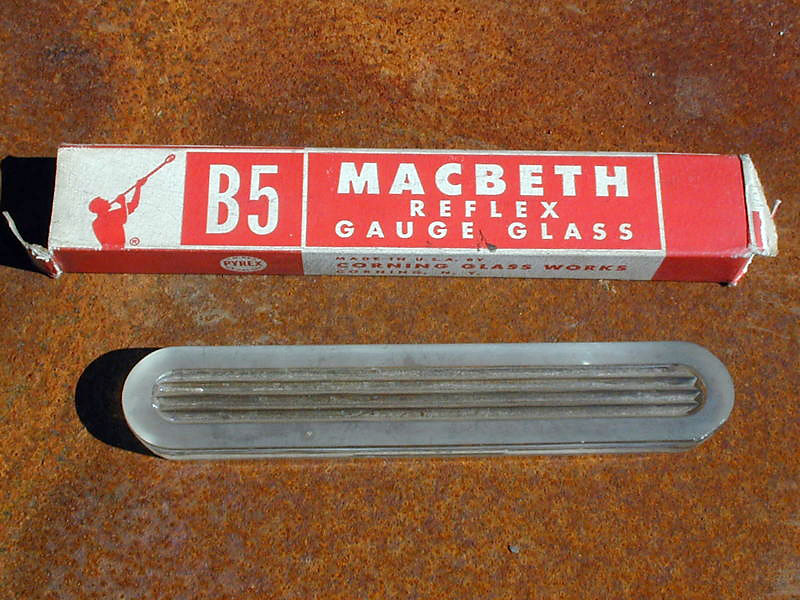
Steam engine gage glasses have prisms to improve water visibility. J. David Conrad Q What type of glass (or other material) was used for the sight glass on a steam locomotive boiler? Was it a special material, or just very thick?— William Johnson, Eagle, Mich.A Most (but not all) gage glasses on steam locomotive are […]
Read More…
Q Why are some Rio Grande steam locomotives referred to as “Mudhens?”— Larry Beck, Susanville, Calif. A The term “Mudhen” refers to 15 Denver & Rio Grande Western class K-27 2-8-2s, Nos. 450-464, built by Baldwin in 1903. Two K-27 Mudhens are left: No. 463, under restoration at the C&TS and No. 464, in operation […]
Read More…
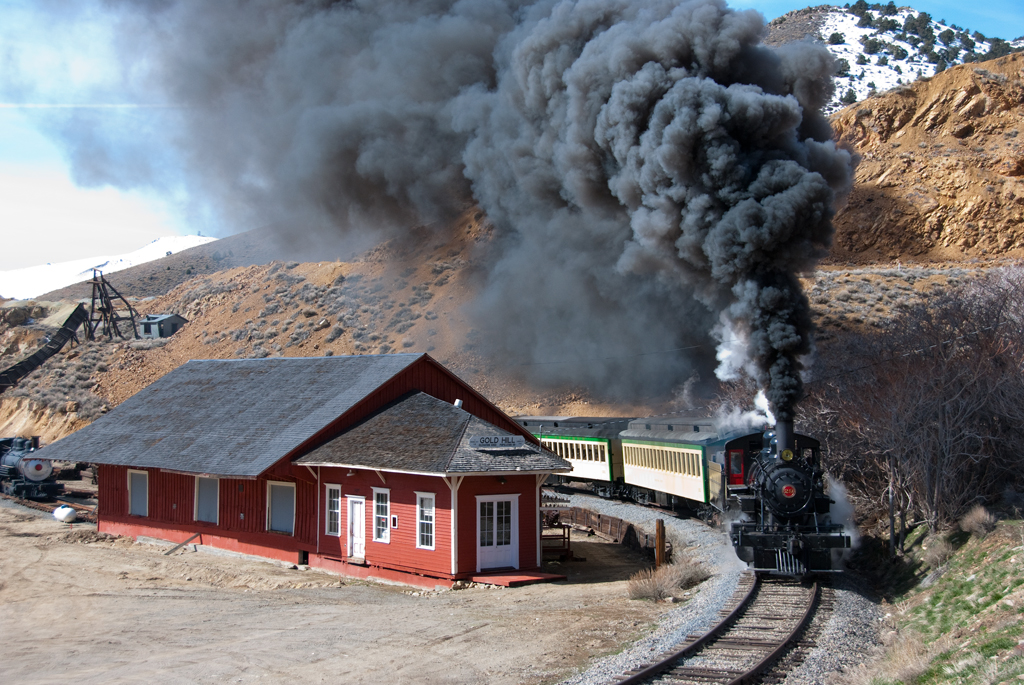
Virginia & Truckee 2-8-0 No. 29 charges past the depot in Gold Hill, Nev., in March 2010 on a portion of the rebuilt silver hauling railroad, high in the desert near Reno. Photo by Jim Wrinn […]
Read More…
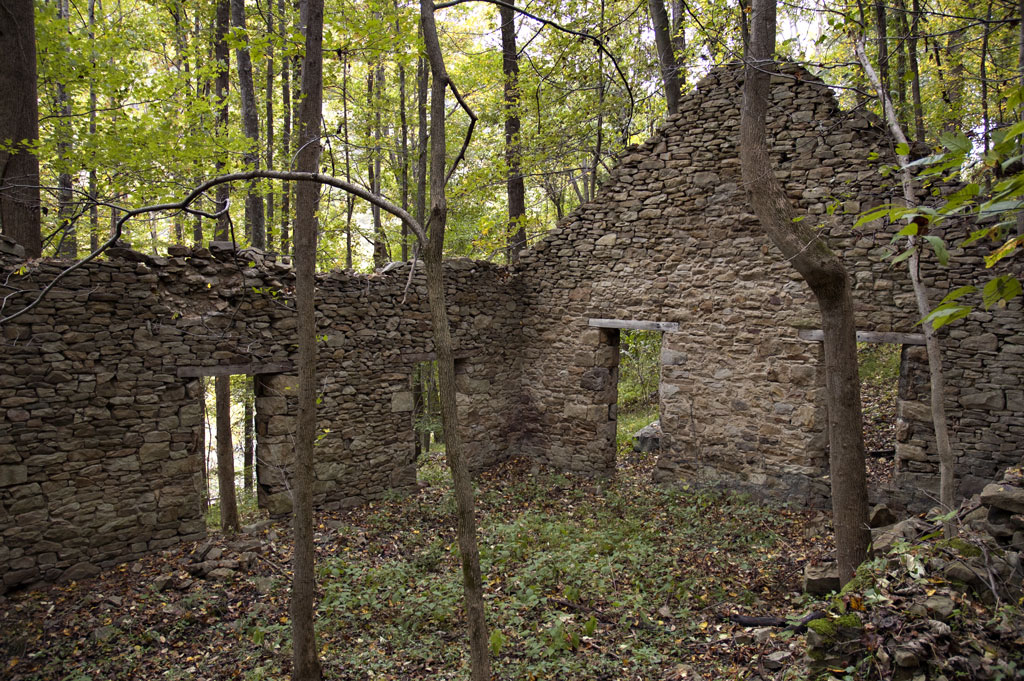
FULL SCREEN Photo by Kevin Scanlon CSX power for the Piney Creek Turn is parked in Quinnimont Yard in Quinnimont, W.V., on Jan. 20, 1991. To the left of the engines across the tracks is the foundation for the iron furnace. FULL SCREEN Photo by Kevin Scanlon A CSX westbound empty hopper train passes the […]
Read More…
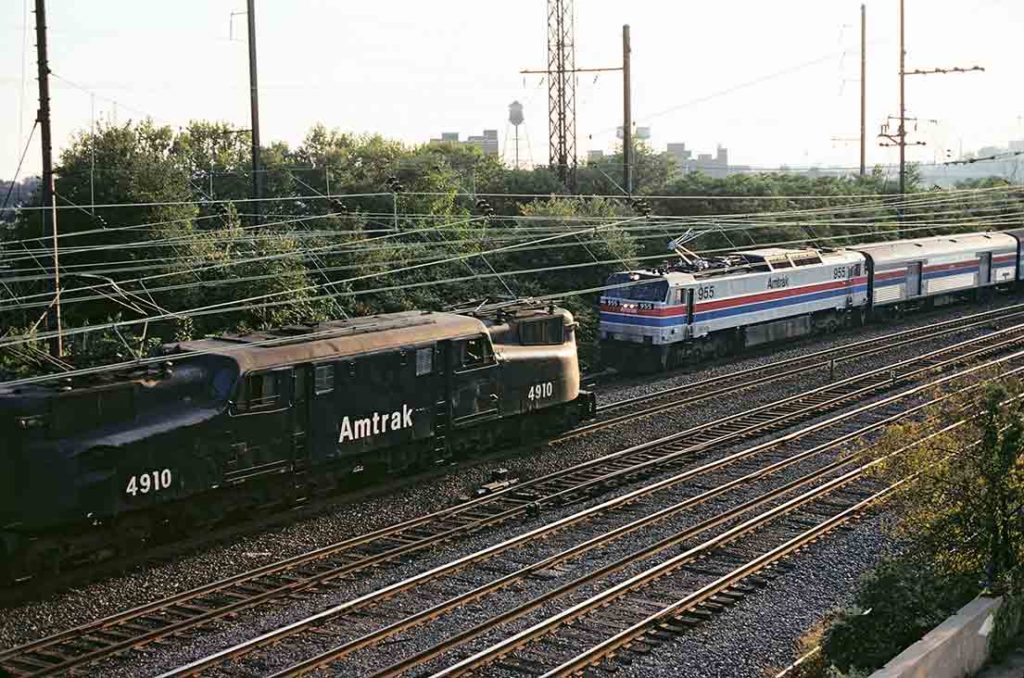
Amtrak GG1 meets an E60 in 1980, two years after the author’s ride behind one of each, plus a Conrail E44. Robert S. McGonigal As the murky fall afternoon began to lengthen, the Silver Meteor I was riding across northern New Jersey began to slow down. Then just east of Rahway, nowhere near a scheduled […]
Read More…
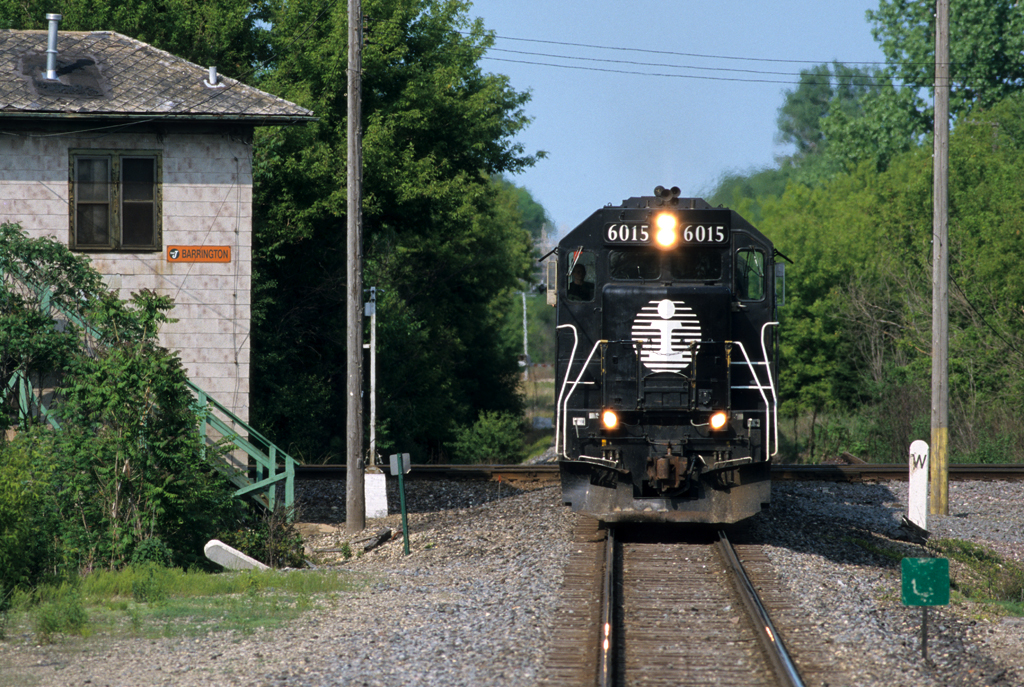
Illinois Central SD40-2 No. 6015 leads Canadian National train 348 south past the tower at Barrington, Ill., on May 6, 2010. Photo by Chris Gus […]
Read More…
Q Why do modern locomotive throttles still use notches?— Ben Redl, Williams Lake, B.C. A The primary reason is to help the locomotive’s engineer direct a specific response from the locomotive. Engine RPM speed must be increased gradually during normal operation. As the engineer demands more power from the locomotive by moving a notch at […]
Read More…

Union Pacific’s Desert Victory and United Way tribute locomotives were the first to receive special paint schemes, in 1991 and 1994, respectively. John C. Benson Q I understand that Union Pacific ES44AC No. 7400 is the railroad’s 15th specially painted locomotive. What are the other 14 commemorative locomotives?— Wesley Chen, Irvine, Calif.A According to Union […]
Read More…
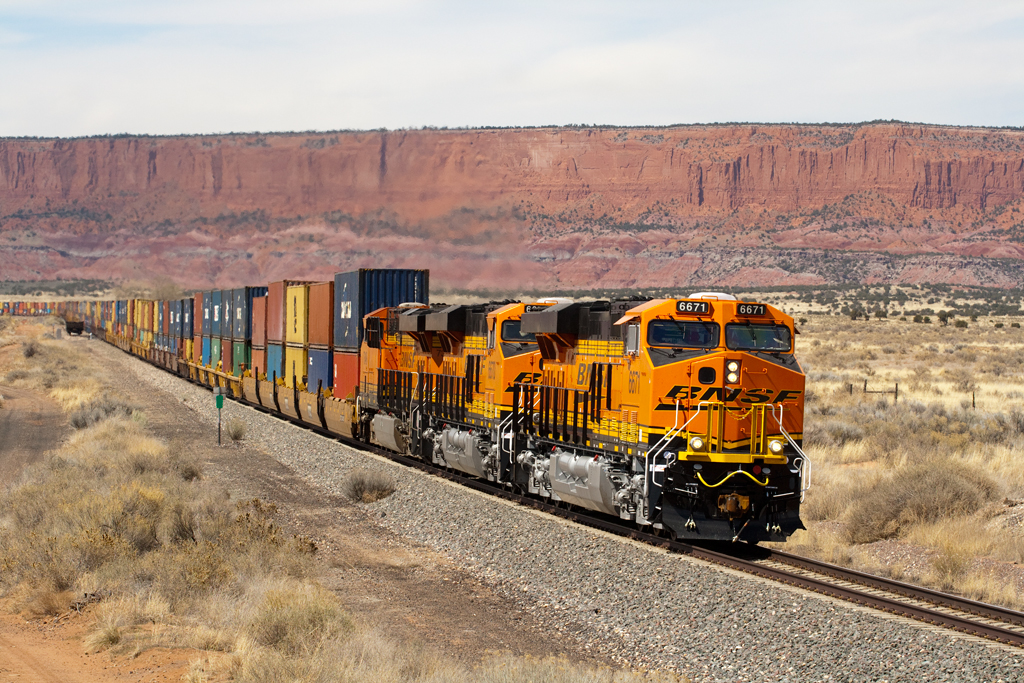
A trio of General Electric-built GEVO locomotives powers an intermodal rain past North Guam, N.M., on April 11, 2011. The first two diesels belong to the class ES44C4, an A1A-A1A-trucked A.C. traction model built to perform to six-motor D.C. designs. Photo by Steven M. Welch […]
Read More…
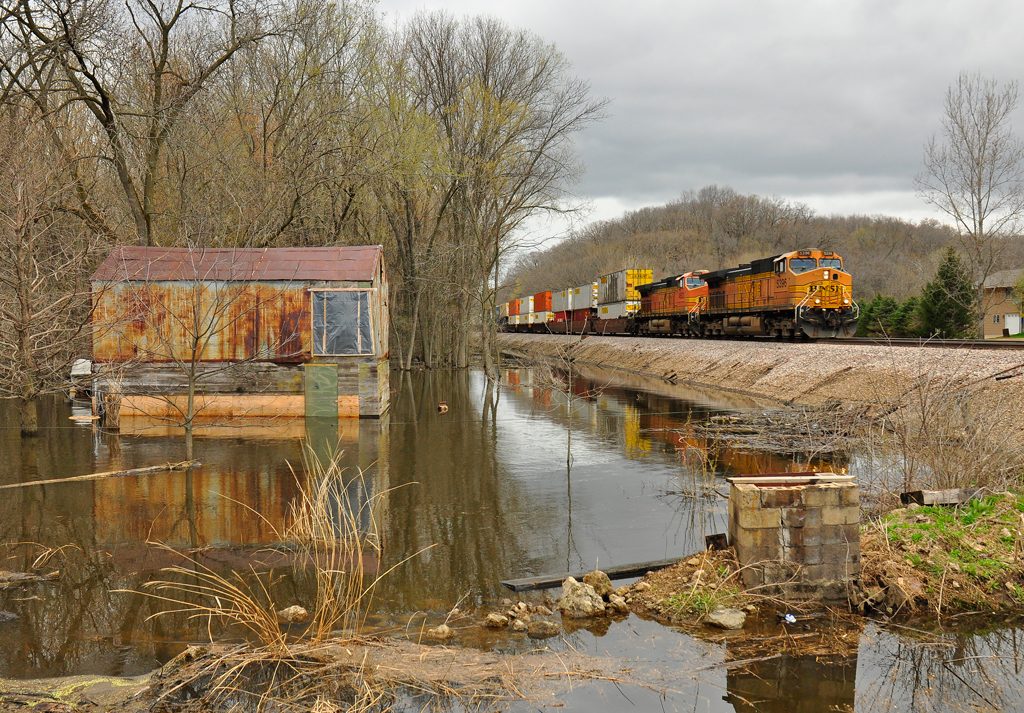
The spring flood waters have started to subside on the Mississippi River (as evidenced by the watermarks on the trees) at Gears Ferry Landing near Galena, Ill., as an eastbound BNSF “Z” train heads east toward Chicago on a cloudy and cool April 23, 2011. Photo by Steve Bauer […]
Read More…
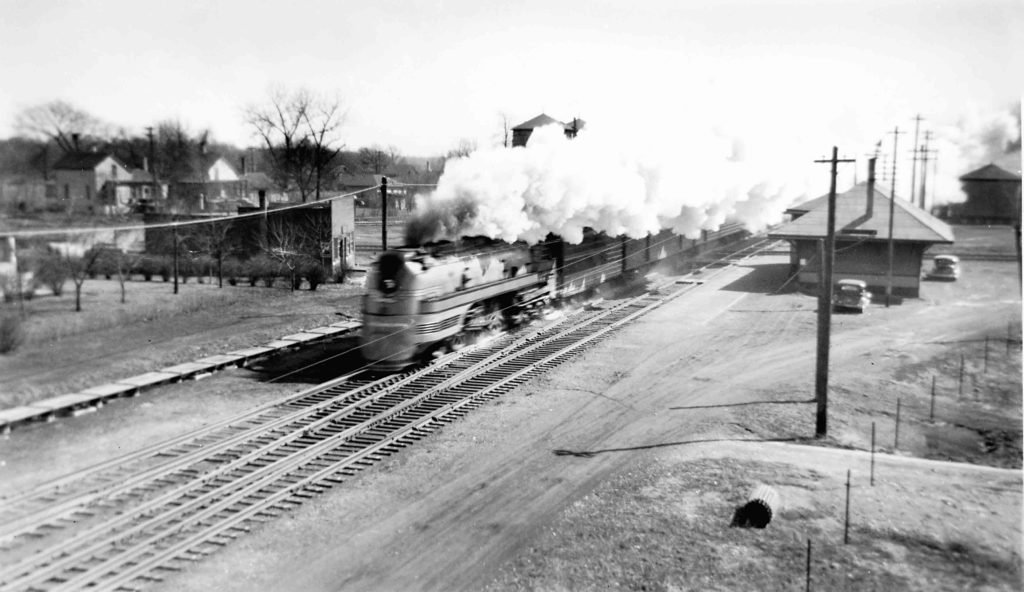
Seen from the North Shore Line bridge, a Milwaukee Road F7 4-6-4 rips through Rondout, Ill., with train 15, the Olympian, in March 1941. Frank Sellers At Christmastime 1940, when I was 15 years old, my widowed mother spent $4 of her hard-earned money to buy me a Kodak Brownie Special camera. I was thrilled. […]
Read More…
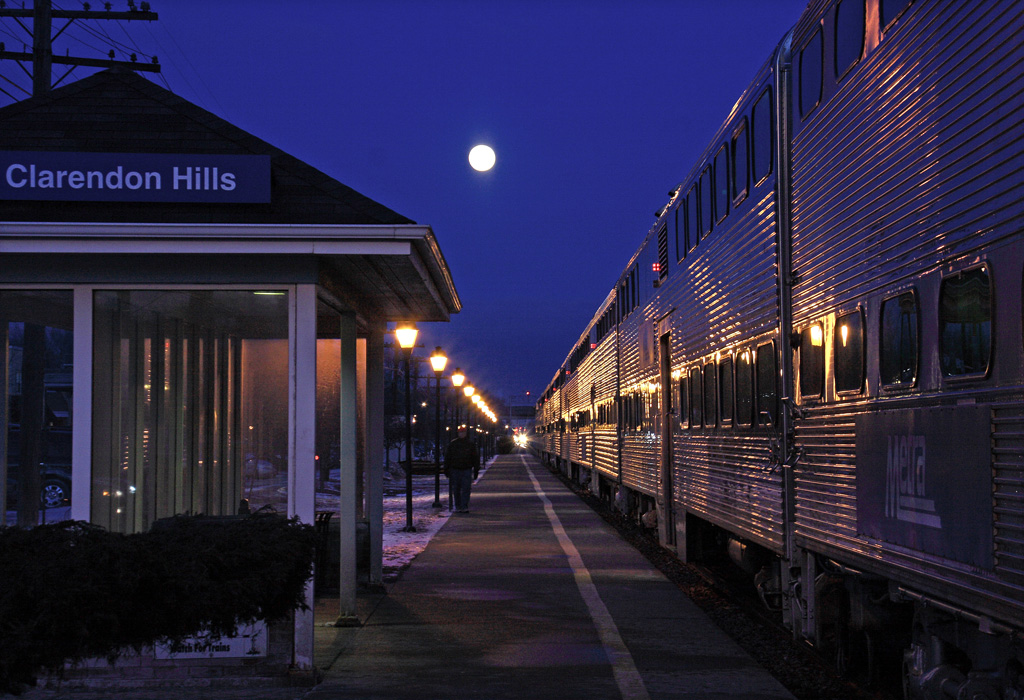
Westbound Metra train No. 1249 stops under the rising moon at Clarendon Hills, Ill., on Metra’s BNSF Railway line. Two additional trains are visible about a mile away in the distance. Paul Hoffmann An inbound Metra express train rips past the Naperville, Ill., station leaving a “smoke tail” in its wake as a local can […]
Read More…










